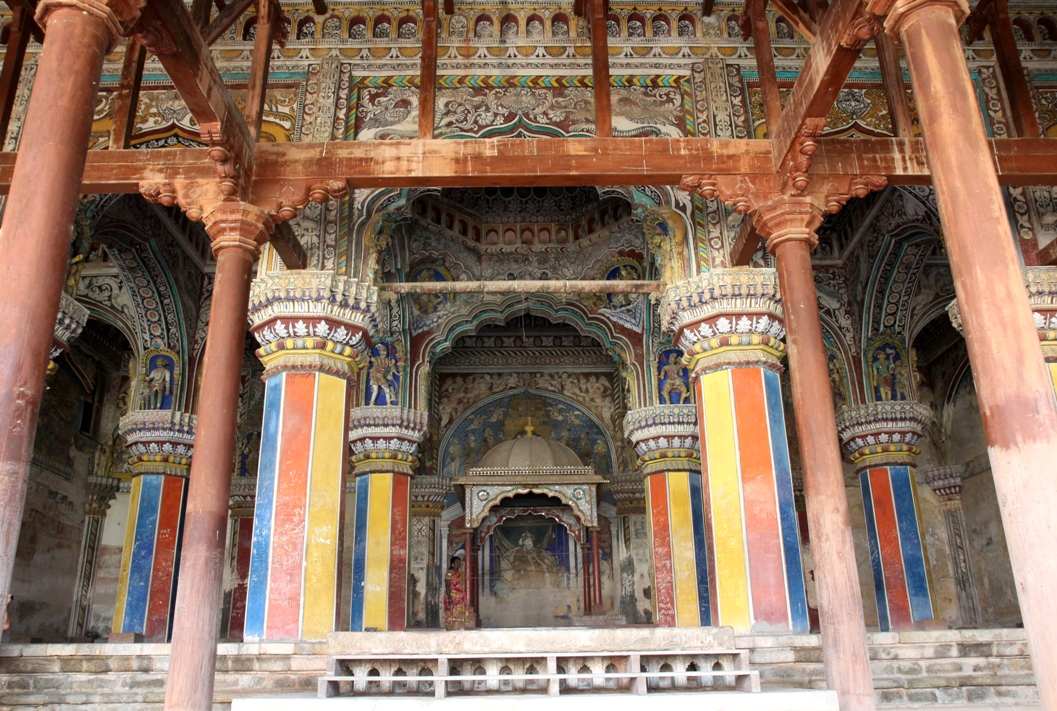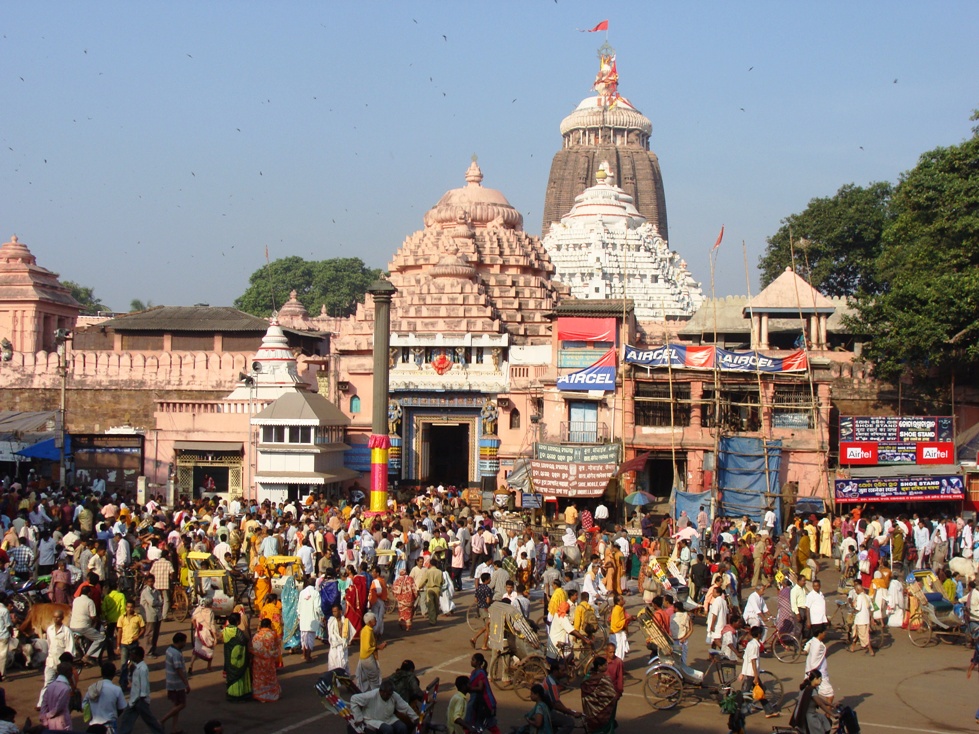Madhav Rao and Maratha Satraps
Nana Saheb was followed by Peshwa Madhav Rao I in 1761, who passed away in 1772. Restoration of Maratha authority in the North was done by Malharrao Holkar who did so by defeating the king of Jaipur in late 1761. Also, Abdali ratified a formal peace with them in 1764, enhancing their prestige. The Maratha succeeded in reestablishing control over Malwa, Rajputana, Delhi, and Bundelkhand but rivalry between the Sardars prevented the Marathas from achieving spectacular results. Madhav Rao was a great administrator. It is remarkable that Madhav Rao defeated Haider Ali, a man dreaded by the British, every time they fought. Had he lived longer, Maratha history might well have been different.
The Feudilization of the Maratha state
The Bhonsles of Nagpur
The most capable was Raghuji Bhonsle who won himself a kingdom from Berar in the west to Orissa in the east, Garha Mandla in the north to Chandrapur in the south. The state was poorly managed and gradually decreased in importance till 1853 when the Nagpur state was annexed to the British Empire for want of a male issue.
The name Sindia, modern day Scindia, is said to be derived from Sendrak, an ancient Kshatriya clan. Ranoji Sindia, 1705, was the first Sindia to rise to fame. He was a junior member of the Patel family of Kanherkhed, and made Ujjain his headquarters some where in 1730. He died in 1745. The battle of Panipat caused a severe setback to the Sindias.
Fortunately, Ranoji’s son Mahaji Sindia escaped and later on, built the vast Sindia state in Hindustan. In 1766, he took over Gwalior from the Rana of Gohad and so began the association of Gwalior with the Sindia dynasty. Mahaji Sindia was the architect of the English debacle at Wadgaon in 1779. In trouble initially, Mahaji Sindia fought back when the British invaded Malwa and a truce was effected in 1781, since the foreigners could ill afford to open many fronts simultaneously.
On 1 December 1784, the Mughal emperor appointed Mahaji Sindia as commander-in-chief of their army with the two provinces of Delhi and Agra. Quoting Browne from Delhi, “From Gujarat to Jammu there is no power but Sindhia and the Sikhs, everything else is but a name.” The Muslim chiefs were averse to Mahaji Sindia on religious grounds and started investigating the title of their jagirs and ganged up against him. While he did sign a treaty of peace with Sikhs, not much came out of it since some Sikh chiefs were against it.
The Rajputs did not support him either. In such a situation, Mahaji Sindia made up his mind to build his army on the English model and hired the services of a Savoyard soldier, De Boigne. The Marathas refused to be part of the new troops so the army consisted of Rajputs and Muslims. While the new army achieved success, it became completely denationalised. When fighting the British, the European officers deserted Mahaji Sindia.
Through a series of moves, Mahaji Sindia was able to regain control over Hindustan. He then visited Pune in 1792 and passed away in 1794, paving the way for expansion of British power in the North. Compton observes, “As a General he may take his stand amongst the greatest India has ever produced. In times of crisis and sudden danger his presence of mind was incomparable.”
This made all the power pass into the hands of Nana Phadnavis. However, due to an accidental death of the Peshwa, Nana found his wings clipped. The last decade of the 18th century saw constant clashes between the Holkars and Sindias at levels of brutality that some times compared the hideous cruelty of Asiatic contemporaries.
Succeeded by Daulat Rao Sindia he brought about the downfall of the Sindia Empire by attempting to subordinate the Holkars. In the midst of a war between the two sardars, the Peshwa entered into a treaty with the British, seeking their help to regain his throne. Realizing that agreeing to the British terms would mean surrendering to them, Daulat Rao Sindia resisted. The British declared a war, the French trained campoos were beaten and General Perron abandoned the army leaving the forces to be killed by the British. Vide agreement 1803, the Sindia ceded to the Company all forts and died in 1827.
The Holkars of Indore
The Holkars belong to a shepherd caste. The first Holkar to rise to fame was Malhar Rao Holkar who came to the notice of the Peshwa when he fought against Nizam in 1720. Being familiar with the topography of Malwa, he was asked to attack and conquer it. Along with the Sindias and Pawars, he was granted the work of realizing Chauth in Malwa. While Balaji Rao and Baji Rao Peshwa cultivated the Rajputs to their advantage, their successor Balaji Rao, on the advice of Malhar Rao Holkar started levying tribute on the Rajputs. Thus, none of them came to the Maratha aid during the battle of Panipat in 1761. Malhar Rao Holkar died in 1766 to be succeeded by Ahilya Bai, an able adminstrator with Tokuyo Holkar assuming command of the army. Between them, they gave the area thirty years of efficient rule. She established good relations with foreign powers.
At end of article read “Malhar Rao Holkar: The Maratha Commander Who Captured Lahore.” Excerpts -
"Using Delhi as the base Malhar Rao also captured Sirhind in 1758 and later Lahore too fell, while Tukoji Rao Holkar conqured Attock. The promise made by Baji Rao to fly the Maratha flag at Delhi and Attock was fulfilled. Malhar Rao passed away in 1766, and his daughter-in-law Ahilyabai Holkar took over and would prove herself to be one of the greatest queens of India."
The next Yashwant Rao Holkar fought with the Sindias and the Peshwas in 1802, defeating them. In 1804, the British declared a war against Yashwant Rao Holkar. Fighting traditional Maratha style, he defeated the British. Victorious, he proceeded towards Mathura, but made the mistake of staying there for four weeks, enjoying British wine and liquor. Meanwhile, the British commander-in-chief regrouped his forces and defeated Holkar. By a treaty of 1805, Yashwant Rao Holkar was recognized as the ruler of the Holkar family. By a treaty of 1818, the state became a feudatory of the British government.
The Gaikwars of Baroda
The Gaikwars were the Patels of Davli, a village near Talegaon, near Pune. Within a couple of years of 1813, the Gaikwars became one of the allies of the British.
At end of article see link to the Gaikwars’ wonderful Baroda Palace.
The Angrias of Kolaba
In 1690, Matabar Khan and the Siddis of Janjira pressed the Marathas. Under pressure, it was the famous Kanhoji Angria who kept the Maratha flag flying. With the family name Sankhpal, they were blue blooded Marathas. Their objective was to get rid of Siddi control from the Konkan coast. Kanhoji Angria realized that there could not be effective control of the seas if he were to be attacked from the hinterland. Thus, he concluded a treaty with Raja Shahu. He defeated the Siddis. With the British, he oscillated between war and peace. He used guerilla tactics at sea which had been so successful on land. He died in 1729.
Next in line was Sekhoji Angria who supported the Marathas in their war against the Portugues and the Siddis. After his death in 1733, the power of the Angrias started declining. Civil war broke out later and one of the brothers Manaji, sought foreigners’ help. The Peshwas, unfortunately, supported Manaji and not Sambaji. Eager to play broker, the Peshwa divided the Angria state between the two brothers, making it unviable to maintain a naval fleet. Subsequently, Sambaji did not support the Marathas fully but continuously fought against the Europeans. He was defeated by Chimnaji Appa and died in 1742.
Next in line, Tulaji Angaria was hated by the Europeans like poison. His warships sailing from Cochin to Diu threatened the very existence of their commerce. In 1756, the Peshwas and the English joined hands to defeat Tulaji. The Maratha navy was no longer the terror it once was and in 1839 the small jagir of Manaji lapsed to the British government for want of an heir.
The Marathas and Mysore
The relations between Marathas and Mysore is a sad tale of them collaborating with the British. The Maratha aloofness in the last war with Tipu showed their lack of foresight and when they realized their mistake, it was too late. This sums up the Mysore - Maratha relations.
Fall of Marathas (1799 to 1818)
Lord Wellesly treated each Maratha chieftain independently and thereby divided them. He obtained control over the Gaikwars of Baroda in 1802. The civil war in Maharashtra in 1802 was the outcome of follies of Peshwa and his chieftains. Yashwant Rao Holkar’s triumph over the Peshwa drove him straight into the hands of the English. By the Treaty of Bassein in 1802, the head of the Marathas federacy was brought under the complete control of the Company. By the Treaty of Deogaon, 1803, the Bhonsles ceded to the Company, the province of Orissa. Daulat Rao Sindia entered into an alliance with the Company in 1804. Yashwant Rao Holkar concluded a treaty with the Brits in 1805.
The Bhonsles ruled Thanjavur in Tamil Nadu from 1674 to 1855.

Maratha Palace Thanjavur
After a series of wars between 1815 and 1817, the sun set on the Maratha Empire in 1818. Baji Rao II, the last Peshwa was allowed to live near Kanpur in isolation till he passed away in 1851.
End of article read, “When Lord Jagannath Witnessed The Great Maratha Devotion.”
Excerpts - "The Marathas rejuvenated Orissa. They were administrators of the former Mughal province from 1751 to 1803. The first eight years through Mughal turn coats, and the remaining, via Hindu subedars. The architect of this great victory was Raghuji Bhosale – I, who ruled over Orissa from Nagpur.
Finally, in 1751, the Nawab of Bengal agreed to give away the territory of Orissa to Nagpur, as well as the annual chauth of 12 lakh rupees from Bengal. It was from this point that the temple of Jagannath in Puri came within the administrative purview of the Marathas.
The Marathas paid special attention to the celebration of two annual festivals, the Rath Yatra, and the second (possibly), the Jhulana festival. The Jhulana festival began during the Maratha rule, contends Narayan Misra. The money spent on these two festivals from the government treasury amounted to about Rs 40,000, annually.
The Marathas brought the Arun stambh from Konark to Puri. The money accrued from temple activities was, by and large, used for the temple, food and facilities for pilgrims and feeding Brahmins and paying for the rituals. Authors Dr. Manas Kumar Das and Dr. BC Ray agree that Maratha rule led to religious rejuvenation in Orissa.”

Centre of pic Arun Stambh, Puri. Courtesy Sarat Kumar Patra